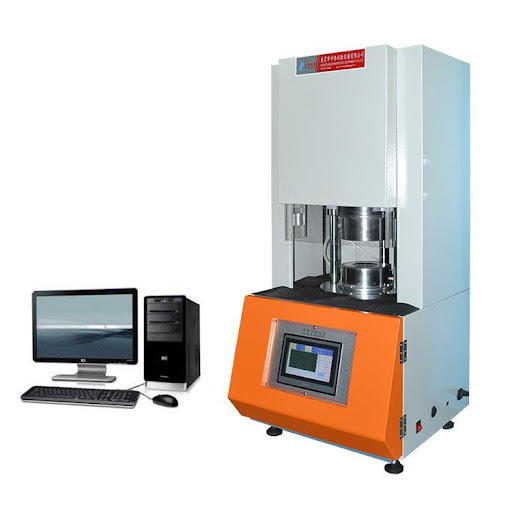What is a RHEOMETER? | Elastomeric properties are not available in rubber compounds in their raw state. These properties can only be obtained if the molecular chains are crosslinked. Rubber compounds must undergo a vulcanization procedure to achieve them. A rheometer, a laboratory instrument that measures the viscoelastic properties of rubber compounds during vulcanization, is used.
WHAT DOES A RHEOMETER DO?
Although there are two types of rubber industry rheometers, ODR (oscillating disk rheometer) and moving die rheometer their purpose and roles are identical.
The rheometer will be closed when a piece of unvulcanized raw rubber is inserted into its cavity. The rubber compound is then exposed to pressure at a constant temperature. This will vary depending on the type and method of crosslinking or vulcanization. The ODR rheometer contains a cavity with a biconical rotating rotor that oscillates to the left and right. This is usually +- 3 degrees. The sensor measures the resistance of rubber to the oscillating motor during vulcanization. The stiffness and viscoelastic properties determine the torque needed for oscillation.
The hardness of the compound will increase during the vulcanization, which occurs in the cavity. The torque and force on the rotor will also increase. The rubber is non-Newtonian and has a dense component. The degree of vulcanization directly affects the shear forces. The rheometer measures the degree of vulcanization at a given temperature as a function of time. The rotor’s torque curve graph as a function of time is a vulcanization curve or rheometric curve.
WHAT DOES THE RHEOMETRIC CURVE TELL US? WHAT ARE THE VALUES OF ML, MMH, TS2 and T’90?
The vulcanizing and processing characteristics of rubber compounds are imprinted on the rheometric curve. This is what parameters like ML, MMH, Ts2 or t’90 can tell us.
First, place a room-temperature compound in a preheated cavity. The mixture heats up, and its viscosity decreases, reflected by a decreased torque on the rotor. The smallest value of the torque curve expressed in dN*m is called ML (Moment Lower). It measures the toughness of unvulcanized compounds at a given temperature.
The torque will increase as the vulcanization progresses. The Ts2 value refers to the time between the beginning of the test and the moment when the torque value rises for 2 dN* m above ML. The Ts2 value, measured in units of time, indicates when the compound begins to vulcanize.
The torque is higher the closer we get to the final crosslinked compound. The crosslinking used will determine the slope of the increase. The curve will normalize after a time. The highest value of the torque curve expressed in dN*m is called MH (Moment Higher).
There are three possible situations. Certain types of compounds (NR, CR) can have the opposite effect. This is evident in the low hardness of the final products. The curve may continue to rise, as is typical for EPDM compounds.














